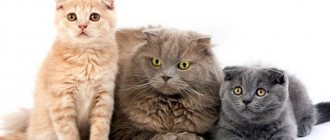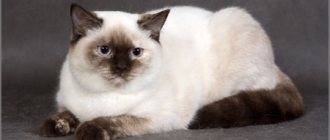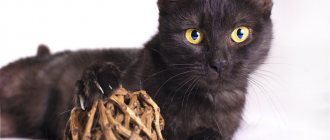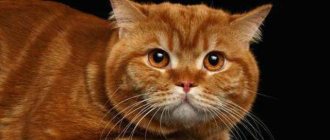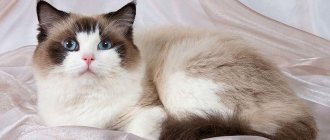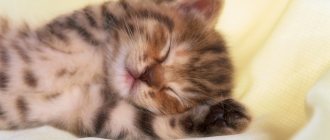May 19, 2021
234
10
History, Regional Studies
If you are studying English, especially the British version, then you probably have an idea about the history, culture, geography and traditions of England. But we often forget that the kingdom includes three other countries that are significantly different from England. And we often transfer our ideas about England to the whole of Great Britain, since we don’t know its other parts well. But calling a Scot an Englishman or forgetting about the existence of Northern Ireland in a conversation with the British is a serious oversight. It will be helpful to get to know other parts of the state better. This article is dedicated to England’s northern neighbor – romantic Scotland.
General information about Scotland
Although Scotland is part of the UK, it is essentially a separate country. Unlike Wales, which was never a single independent state and is quite closely associated with England, Scotland was once a strong and proud independent country. Moreover, it was not formally conquered, but simply annexed to England as a result of a decision of the Scottish Parliament. And even after becoming part of Great Britain, it retained many rights.
Scotland's connection with England is rather tenuous. Scotland has not only its own traditions and culture, but also its own laws, its own police, its own currency, its own religion and even its own prime minister. Most Scots are nationalists who really don't like being confused with the English. They fiercely defend their identity.
The name Scotland - Scotland - comes from the Latin word Scoti, which denoted the Celtic tribes of the Gaels. Until the 500th century AD, they lived in Ireland, and then some of the Scots moved to Scotland and founded the first state there. It was called Alba or Albania, but by the late Middle Ages it became known as the “country of cattle” - Scotland.
Scotland covers an area of 78 thousand square kilometers, which is approximately half the area of England. The country is located in the north of the island of Great Britain and on several adjacent islands included in the Shetland, Orkney and Hebrides archipelagos. The border with England runs at one of the island's narrowest points, between the Solway Firth and the North Sea.
A large geological fault known as the North Scottish fault runs through Scotland. It divides the area into two different regions: the Highlands and the Lowlands. Most people live in the lowlands of Scotland, where all the major cities are located. They form the so-called “Central Belt” on the map of Scotland.
In the North Scottish Highlands there is the largest point in Scotland and all the British Isles - the peak of Ben Nevis with a height of 1344 meters. Scotland is also famous for its lakes, which are called “lochs”. The most famous lake, Loch Ness, is located in a narrow valley near the Grampian Mountains in the north of the country.
Scotland has a temperate oceanic climate, which is formed under the influence of the warm currents of the Gulf Stream and cold winds from the North Sea. In general, the weather in Scotland is damp, cool and very variable.
The capital of Scotland is Edinburgh, the second largest city after Glasgow. Glasgow is considered an industrial centre. Another large Scottish city is Aberdeen, specializing in the energy industry.
Confrontation between the English and Scots
In 945, the Scots again won victories in their campaigns of conquest. Now the people under the leadership of King Malcolm I, having received the support of the Anglo-Saxons, managed to conquer the northern territories, annexing the British state of Strathclyde to Scotland.
His follower, Malcolm II, successfully continued the work of the famous king, and therefore the Scots soon acquired lands in the Tweed River valley. Then the confrontation with the British begins. Canute the Great, who came to power shortly before Malcolm's campaign, decided to appropriate part of the conquered lands for himself. True, then everything ended in a peace treaty, and Scotland remained with its territories.
“The Battle of Culloden”, 1746 Artist David Morier, Location: Holyrood Palace, Scotland
At the end of the 13th century, the Scottish ruler Alexander III died under strange circumstances. The king left no heirs after himself, and the legal right to the throne belonged only to his granddaughter. Alas, the girl died before her coronation. This caused a struggle for power and the beginning of a long Anglo-Scottish conflict.
The English rulers realized the value of the Scottish lands, which had been ruled by rebellious kings for several centuries. Now, in a time of unrest and strife, Scotland turned out to be especially vulnerable. Despite this, the British should not have underestimated the Scottish people. The confrontation lasted for several centuries, and the result was variable.
"Wallace on Trial at Westminster". 1860 Artist: Daniel Maclise
Judging by the current situation in Scotland, which is part of the United Kingdom, one might mistakenly assume that England has won a victory over a wayward people. This is not entirely true. Yes, the British managed to annex Scottish lands to the territory of Great Britain, but they could not change the Scots themselves.
The proud and freedom-loving people have remained virtually unchanged and still resemble their brave ancestors. Oddly enough, even today for most Scots the authority is not the Queen of Britain, but their famous fellow countryman, poet and bard Robert Burns.
Modern Scots
Despite long grueling wars, periods of conquest and suppression, the Scots retained their cultural values, and today they preserve and enhance them. Who knows what the culture of modern Britain would be like without the Scottish contribution.
The importance of Scotland and its people to the kingdom cannot be underestimated. And, I must admit, the Scots are justifiably proud of their glorious history and desperate ancestors who fought for the freedom and rights of their descendants.
History of Scotland
The first people appeared in Scotland 8 thousand years ago. But little is known about this period until the arrival of the Romans in Britain. This era in the history of Scotland is called prehistoric, it left behind ancient archaeological sites and ruins - the so-called brochs, dunes, as well as tombs and circles of standing stones.
The real story begins with the Roman conquest. At the turn of the era, Scotland was inhabited by Pictish tribes. In 82 AD, Gnaeus Julius Agricola invaded the north of Scotland and, despite the skillful and desperate resistance of the Picts, captured the strongest part of the country - Caledonia, and then the rest of the Pictish territories. But Rome found it difficult to hold these lands, and as a result, the Romans built several fortified ramparts on the border with Pictish territory to protect against attacks by the Picts. Since those times, Hadrian's Wall, Antonine's Wall and others have been preserved in Scotland.
In the 5th century, Christianity began to spread among the Picts. The Romans abandoned Britain, and the Pictish tribes freely plundered English territories. Around the same time, Scots from Ireland began to move to Scotland. A state was created called Dál Riadu, which had both Irish and Scottish territories. Pictavia continued to exist, but over time, many of its rulers also became Scots, as the Picts and Scots mixed with each other.
In 839, the ancient kingdoms of Scotland fought a bloody battle with the Vikings, in which all the senior lines of the royal houses of both Dal Riad and Pictavia were killed. The grandson of one of the princesses of Dal Riada, Kenneth McAlpin, laid claim to both kingdoms and in 843 united them under the name Alba, which is also known in the Latin form Albania. In the 10th century, this state became known as Scotia, and then Scotland.
When England was captured by William the Conqueror, Scotland willingly hosted the fugitive Englishmen. But the new English king did not like this; a war began between England and Scotland, which quickly ended with the victory of William the Conqueror. The King of Scotland took an oath of allegiance, but for the first centuries Scottish dependence on England was only formal.
It was not until the late 13th century that Scotland truly came under English rule as a result of the short-sighted actions of the new Scottish king, John Balliol. Claiming the throne, he enlisted the support of the English king and became his debtor, eventually losing his kingdom. In 1296, the country became an English colony, although already in 1314, as a result of numerous uprisings, Scotland regained its independence under the leadership of Robert I the Bruce. But the wars with England did not stop for a long time. And during the Hundred Years' War, Scotland even entered into an alliance with France against England.
In times of peace, the ruling lines of both kingdoms were united through marriage. And in 1603 it turned out that the Scottish king James or James VI became the heir to the English throne. And in 1707 England and Scotland were united as the new kingdom of Great Britain with a single parliament.
In 1999, Scotland restored its parliament, which received many rights in the field of domestic policy. In 2014, a referendum on Scottish independence was held, but 55% of the population voted against it.
Formation of the Scots state
By the beginning of our era, the main people of Scotland had already clearly stood out, and the unification of the Scots and Picts took place in 843. The first king of the Scottish kingdom, Kenneth the Bold, brought his people's vision to life.
Previously, the Scots had repeatedly attempted to unite the disparate lands, but only Kenneth succeeded. As soon as he gained power, the king went to war against the Picts, with whom there had been a confrontation for a long time. Having conquered their territories, he increased the possessions of Scotland, beginning the difficult stage of unifying the tribes subject to him.
In the 7th century, Scotland was essentially two states. One was ruled by the Scots in the western lands), the other belonged to the Picts (eastern part). By that time, Christianity had already become the dominant religion of the Scots. The Picts adhered to pagan beliefs longer, but the influence of the Scottish Christians extended to their tribes.
Scots
Scots make up 84% of the country's population. In addition to them, the British, Irish, Europeans and a small number of people from other countries live in Scotland. Modern Scots can be divided into two main categories. One is the descendants of the Picts and Gaels, a mixed population living in the lowlands of southern Scotland. The second are the Highlanders, who are also known as Highlanders, Goidels or Gaels. These are direct descendants of the Gaels or Scots, who hardly mixed with the English and have largely retained their identity.
There are three spoken languages in Scotland: Gaelic, Scots and English. With the latter, everything is clear - it is ordinary English, with some dialectal differences. And the first two are often confused. Both Gaelic and Scots are called Scots, but they are completely different and have different origins.
Gaelic is the Celtic language of the Gaels, which survives only in the Highlands and Islands of Scotland. It is spoken by the Highlanders, who have preserved this language since the founding of the kingdom of Dal Riada. And the Scots language is, according to different versions of linguists, either a language of the Germanic group closely related to English, or a regional dialect of English or Old English. Scots originated from English, more accurately Anglo-Saxon or Old English, in the 11th and 12th centuries. In the 14th century it fully developed and came into use throughout much of Scotland. But after the unification of the kingdoms in the 17th century, English began to dominate the Scots language.
Today, the Anglo-Scottish language, as Scots is also called, has a vulnerable status - it is spoken by less than half of the population of the lowland part of the country. The Gaelic language is in even more dire straits, the number of its speakers in Scotland is about 50 thousand people.
Most of Scotland's population is Presbyterian, unlike the English, who are predominantly Anglican. The Presbyterian Church was created in Scotland in 1560 as one of the branches of Protestantism.
Primitive stage and Roman influence
Historical reference books provide comprehensive information about the first people in Scotland. Archaeologists have proven that settlements in the country appeared eight thousand years ago, but can these people be considered Scots? Of course not. At that time, many different tribes lived in Scotland, differing from each other both linguistically and culturally.
The development of the Scots as an ethnic group was greatly facilitated by the Roman conquest. The soldiers of Rome brought with them literacy and the basics of writing. Thanks to the Latinization of the conquered lands, the Romans were able to establish their own laws, and the tribes in these territories received new opportunities to improve culture.
Part of a Celtic cauldron on display in the British Museum
I want to note that the legionnaires of the Roman Empire were never able to reach some regions of Scotland. These were the northern mountains where the unconquered tribes of the Gauls and Picts remained. Later, it was their beliefs and worldviews that would be considered primordially Scottish.
Despite the enormous contribution of the Romans to the development of Scottish settlements and cultural characteristics, one should not assume that life stood still before their arrival. The people of Scotland were distinguished by their masterful abilities in stone processing, making products and wood. For example, today you can see ancient settlements carved into the rocks. This fact alone indicates the high level of technical development of the primitive people of the region.
Ancestor of the Scots / © Executor / illustrators.ru
Scottish culture
There is a widespread belief that Scottish culture is closer to European than English culture. Be that as it may, it really has little in common with English and is distinguished by its originality. On the other hand, the Scots, like the English, are very sensitive to their traditions and are conservative.
The main symbols of Scottish culture are thistle flowers, a checkered pattern called tartan, kilts, playing bagpipes, a dish made from offal called haggis, golf and whiskey. All these national advantages still live and are used. For example, in Scotland there are regularly held competitions for solo bagpipe playing. And kilts are still worn as part of formal, wedding or festive costumes and as military uniforms for parades. Some Scots even wear kilts every day.
The Scots preserved the ancient highland games - competitions for agility, strength and speed. And this, too, is not just a half-forgotten tradition, but a still popular form of entertainment. At the Highland Games, sporting events, performances by bagpipe bands and Scottish dancers are organized. Popular competitions include log throwing, hammer throwing, stone pushing, and hay bag toss.
What Scottish Fold cats look like: features of Scottish cats
Shorthair Scottish Fold
Shorthair Scottish Straight
What else does a Scots cat look like - a longhaired Highland Fold
Scottish Longhair Highland Straight cat
Now let's talk about how a Scottish cat is identified when it is still small. The surest way is to look at your parents. Often they only let you look at the father in the photo, because... the father does not live with his family. And it may be fake. But you can see your mother, because... She always takes care of her offspring until 2-3 months. A purebred Scottish cat has the following features: round eyes, a compact nose, plush fur, stuffed cheeks, and a spherical head. The tail should be elastic and quite long.
Article continues after advertisement
Also, to identify a Scottish cat, you should ask for its documents. Just not a veterinary passport, but a pedigree, because... The owners themselves record the breed in the passport. The pedigree is issued by authorized clubs: the parents, their breed and ancestors must be indicated. That is, the pedigree, if it is not fake, is the only guarantee that this is a Scottish cat. If you have doubts about the authenticity of the documents, you can check the information at the club where the cat is registered.
But even if the mother is purebred, this does not mean that her kittens are purebred. It happens that a breeder crossed a pet with a cat of no breed or another breed, but does not admit it. Therefore, you also need to ask for a document of the kittens from the litter you are interested in - a metric. At the time of inspection of the kittens, it may not yet be formalized, but at the time of sale the breeder is obliged to give it to you. Then you will be sure that they are offering you exactly a Scottish kitten (Scottish Straight, Scottish Fold, Highland Fold or Highland Straight).
In what cases can a breeder not provide documents for kittens? In cases where the cat does not have a pedigree and is not allowed to breed, or the act of mating has not been registered. Then it turns out that the kitten’s breed will have to be determined by eye, and this is a thankless task, because This is difficult for a non-specialist to do. Yes, and there are kittens that look very similar to Scots, but nevertheless do not have Scottish blood.
But if we talk about appearance, then the Scottish kitten, contrary to popular opinion, does not necessarily have folded ears: only Scottish Folds and Highland Folds have them, and their brothers Scottish Straights and Highland Straights have rather large and erect ears. In addition, mestizos can also have well-shaped ears, so this sign alone does not prove or disprove the presence of the breed.
If the kitten is fold-eared and you are going to buy it, you need to find out from which parents it was born: one partner should be straight (with erect ears), and the other should be fold, because Under no circumstances should two fold-eared dogs be crossed to avoid genetic abnormalities. Some breeders cross two Folds out of ignorance and calmly admit it. If you hear such an answer, do not buy a kitten from such a breeder. Some breeders know that such matings are prohibited, but they still produce them so that there will be more folds in the litter. They do not admit to such matings. Therefore, require a metric where both parents are specified.
In addition, it is important to understand that breed characteristics can be expressed to varying degrees in different animals. A good Scottish kitten should resemble a teddy bear with a thick undercoat (if it is a Scottish variety). If he is thin, elongated, his head is not spherical, his cheeks are not pronounced, most likely you are dealing with either another breed, or a mestizo, or a mongrel cat, or a pet-class kitten. Take another look at your parents. It happens, of course, that the parents are outstanding representatives of the breed, but some kittens in the litter turned out so-so. Nevertheless, from good parents there is still a greater chance of getting beautiful kittens with good breed characteristics, even if these are pet-class kittens (not suitable for breeding).
Scottish kittens resemble plump teddy bears
And these look skinny with non-spherical heads, ears do not fit well to the head. The reason is that these are not purebred Scottish kittens and kittens with weakly expressed breed characteristics.
Now let’s summarize the main signs that will help you choose a good kitten.
